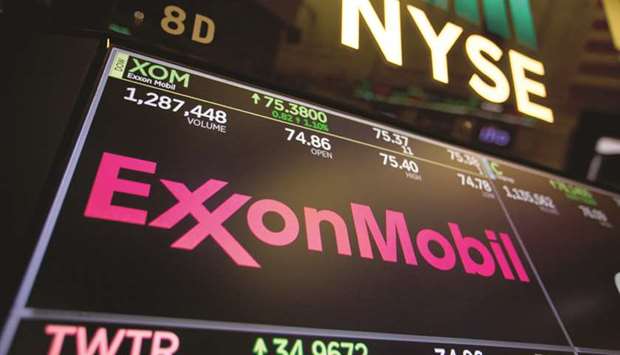“We must try and not lose our nerve when the market gets to the bottom as some people almost always do,” the founder of Standard Oil instructed his senior management in 1884. “We will surely make a mistake if we do not buy.”
More than 130 years later, with renewable energy growing and electric vehicles threatening the future of gasoline-powered cars, the strategy of Exxon, Standard Oil’s biggest successor, is largely the same: double down on oil.
Speaking at his second Exxon annual meeting as chief executive officer in late May, Darren Woods used the kerosene story as an example of how the company adapts over time. “Society’s needs evolve, and so do we,” he said, as he positioned Exxon as part of the solution to what he calls the “risk of climate change.”
But Woods in an interview says the company’s investment dollars will follow Rockefeller’s bet-on-what-you-know mantra.
At a time when most of Big Oil is restraining spending, in part because of uncertainty over the future of energy markets, Exxon plans to boost expenditures every year from now until 2025. It wants to invest a total of more than $200bn, almost all on traditional oil and gas megaprojects around the world, from Brazil to Papua New Guinea. The company has no plans to follow global rivals such as Royal Dutch Shell, Total, and BP into wind, solar, or battery storage.
“It’s about finding the advantaged barrels, the profitable barrels, the barrels that we’d be happy with, irrespective of where we’re at in the price cycle,” Woods says.
The way the Exxon chief sees it, the world’s energy consumption is growing at such a fast rate that even in the unlikely scenario that all cars are electric in 2040, oil demand would be the same then as it was in 2013. So investing when others are pulling back should pay off, he says.
The risk, of course, is that Exxon gets caught on the wrong side of history, producing fossil fuels that consumers don’t need, that governments don’t want, and that are a major cause of climate change. Those prospects have made many investors wary. “If you look back historically there have been a lot of industries that have disappeared because change has swallowed them up,” says Brian Rice, a portfolio manager at California State Teachers’ Retirement System, which manages $225bn including Exxon shares. “I can’t imagine oil and gas going away completely, but it’s evolving.”
None of the majors detail their spending on renewable energy, but the difference in their strategic positioning is marked. Royal Dutch Shell has pledged to invest in wind projects in the Netherlands. It plans to offer hydrogen refuelling and electric car charging stations and will supply power to retail customers in the UK. BP is investing in solar, and Total SA in battery manufacturing. Norway’s state-controlled oil company recently changed its name to Equinor ASA from Statoil to indicate its post-petroleum future.
Exxon has no expertise in renewables, Woods says, so despite the role they have in the world’s energy mix, the company won’t be investing in them. Its renewable efforts are largely focused on developing proprietary technology in-house, including an algae-based fuel that could power heavy-duty vehicles.
“Society has aspirations for economic growth, reliable and affordable energy, and environment protection,” Woods said at the annual meeting. “We see our role as helping close the gap between what people want and what can be responsibly done.”
Higher long-term spending on traditional projects isn’t what investors want now, and it’s evident in Exxon’s stock market performance. Shares are down 2% over the past three years even as Brent crude, the international benchmark, has climbed 19%. And now the company is close to the once unthinkable — losing its position as the world’s biggest publicly traded oil company. Its market value lead over Shell has narrowed to about $55bn, from $128bn a year ago.
“The market wants disciplined spending, they want return of cash flow, and, effectively, Exxon is off-cycle,” says Mark Stoeckle, who manages $2.4bn including Exxon shares at Adams Funds in Boston. “Exxon is spending. It’s spending more than the other integrated Big Oil companies.”
Exxon’s capital expenditures will rise roughly 40% by the early 2020s, to about $33bn a year. By contrast, Shell’s spending is remaining at about $27bn annually, while Chevron’s will top out at about $20bn. Shell and Chevron have been open about their intentions to return money to investors through share buybacks. Woods says Exxon will only do so if there’s enough cash left after its investment in new oil and gas production.



